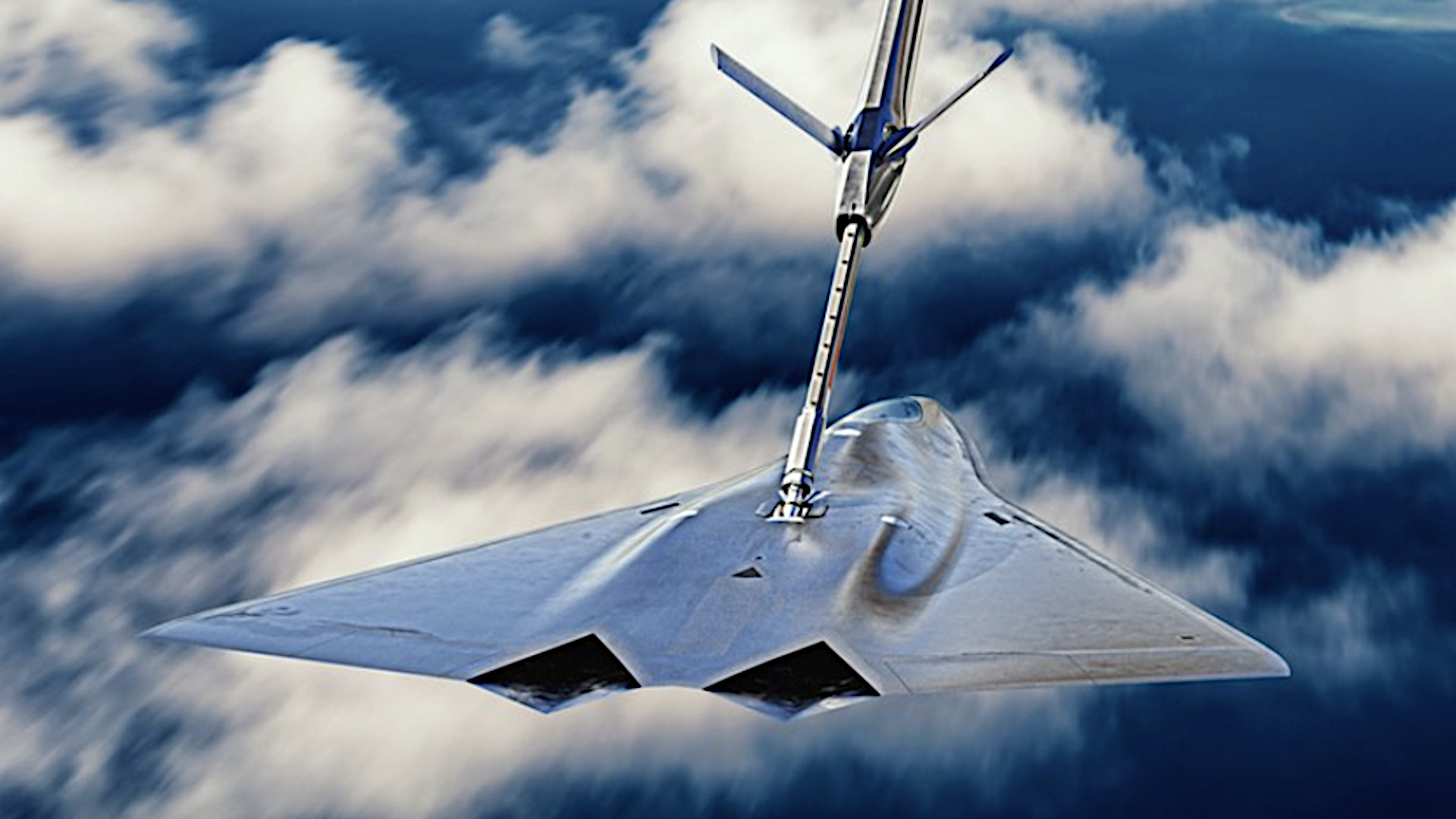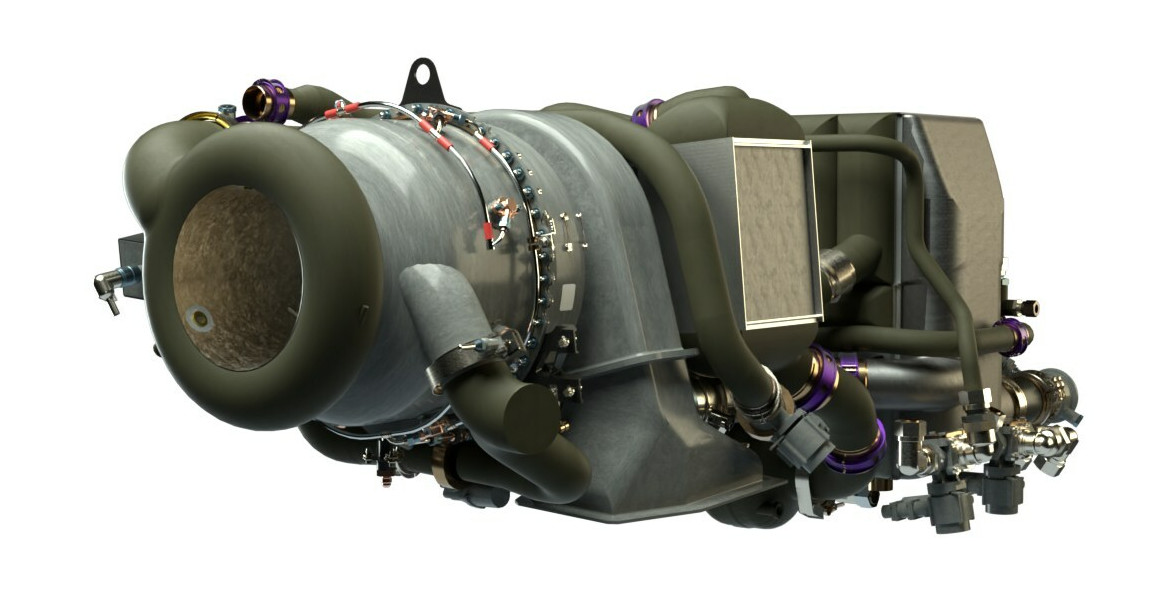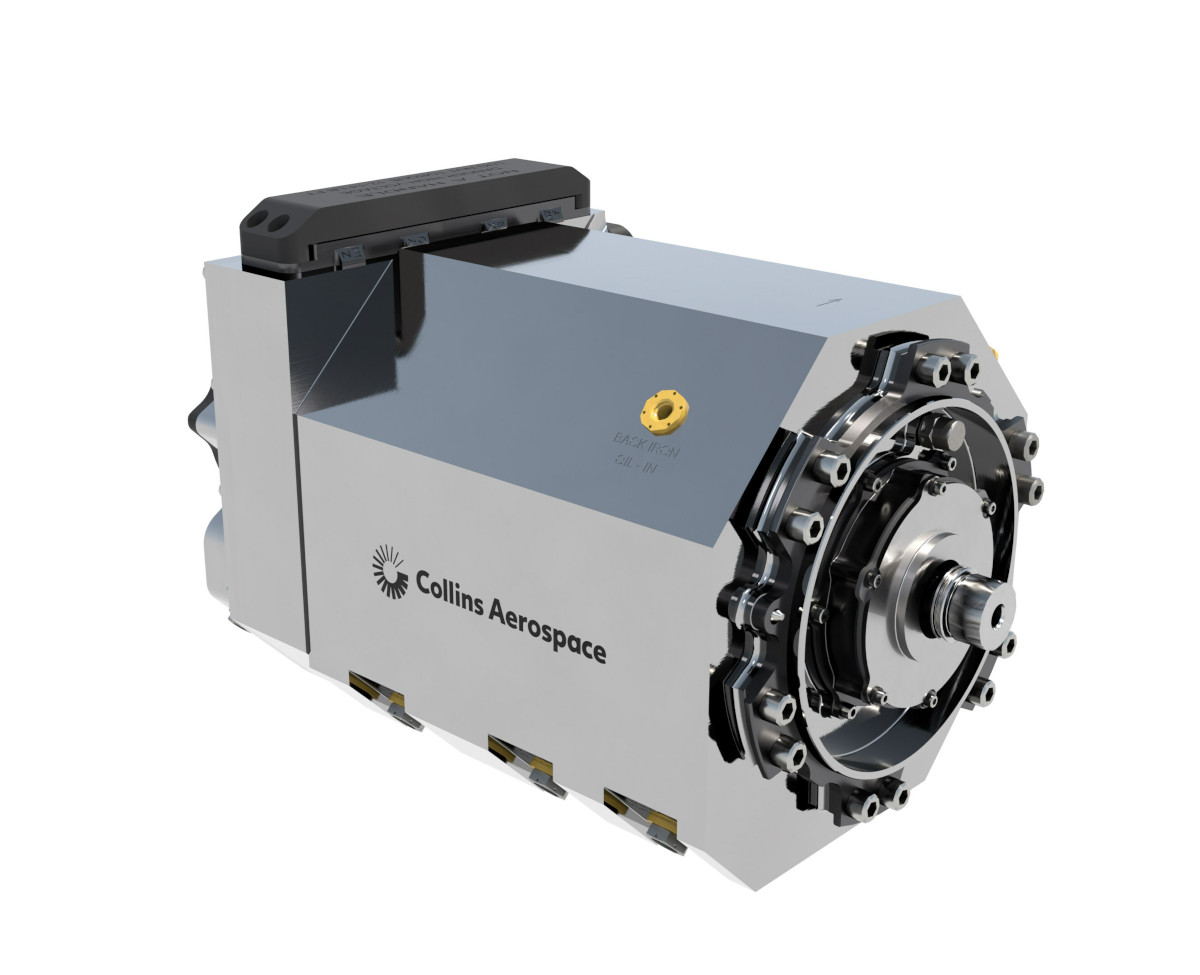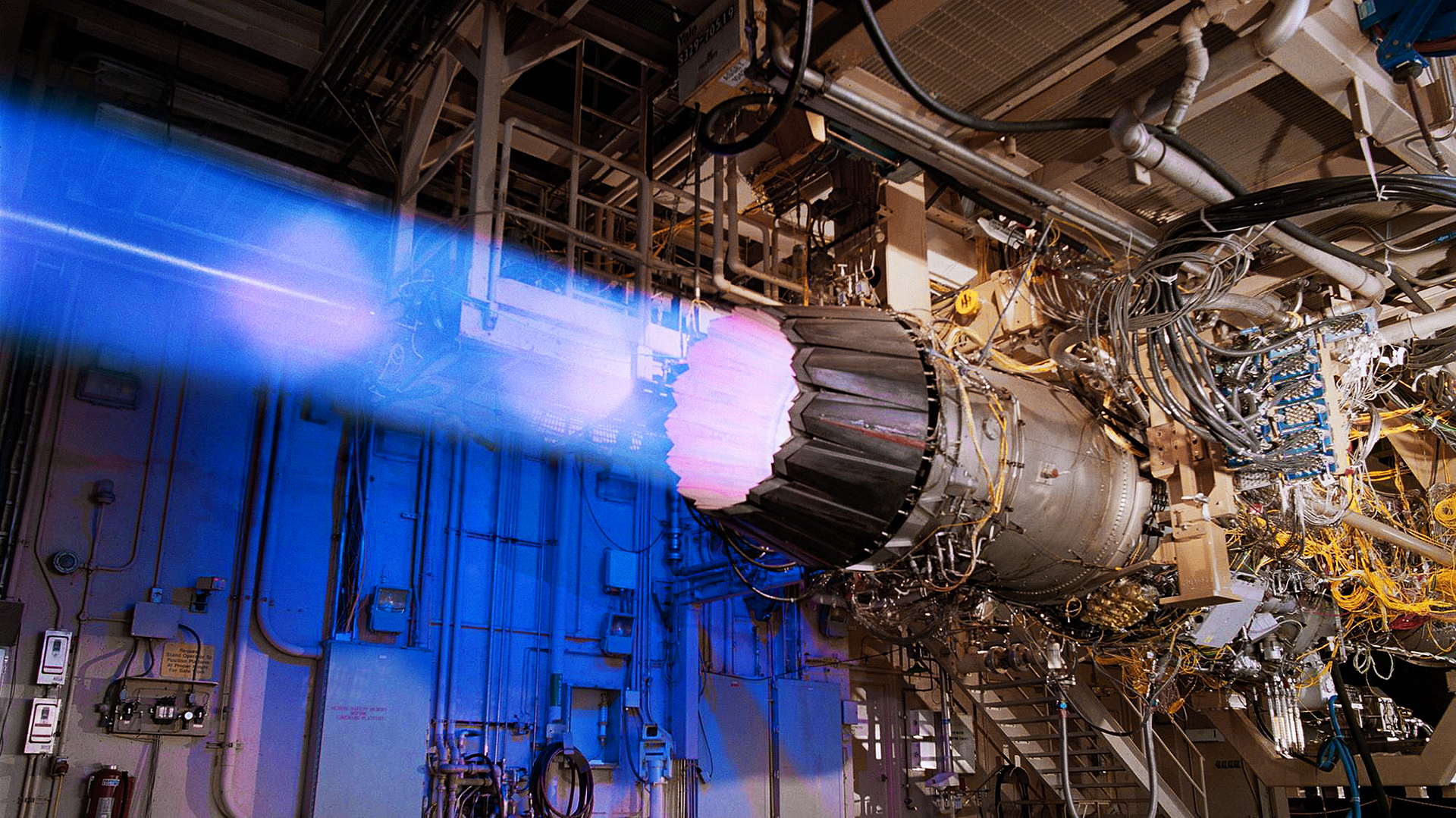Pratt & Whitney has accused Lockheed Martin of trying to undermine the U.S. military, including its efforts to acquire advanced sixth-generation stealth combat jets, with its open advocacy for a new engine for the F-35 Joint Strike Fighter. Pratt & Whitney, a division of Raytheon, makes the F135 turbofans that currently power all three F-35 variants and is pushing for an Engine Core Upgrade program. Earlier this week, the head of Lockheed Martin’s aviation division said not acquiring an all-new powerplant for the F-35 Joint Strike Fighter is “short-sighted” and doesn’t properly account for future requirements.
Various Pratt & Whitney executives have now provided statements to multiple outlets, including The War Zone, but all using similar language to criticize the earlier comments from Greg Ulmer, Executive Vice President of Lockheed Martin’s Aeronautics business area. Ulmer had himself talked to a number of outlets about the F-35 engine issues on the sidelines of this year’s Paris Airshow, which opened on Monday.

How F-35s will be powered in the future has been an increasingly hot-button issue since U.S. Air Force officials first announced that the decision had been made to go with the F135 Engine Core Upgrade (ECU) versus a new engine during the rollout of the Pentagon’s 2024 Fiscal Year budget proposal earlier this year. If this decision stands, examples of all three F-35 variants across the U.S. military, including those in service with the U.S. Marine Corps and Navy, would get upgraded F135s, as well. The assumption is that foreign operations would likely follow suit and that these uprated engines would be integrated into future new-production F-35s.
The Air Force has already spent at least around $4 billion to explore advanced engine options for the F-35 through the Adaptive Engine Transition Program (AETP), but now wants to cancel that effort. Pratt & Whitney and GE both developed prototype advanced engine designs, known as the XA101 and XA100, respectively, as part of AETP.

“I’m going to advocate, and I do advocate, for AETP, another engine,” Ulmer said in an interview this week according to Breaking Defense. “I think some of the approaches today are very short-sighted and not considering a longer-term view.”
“I’m not going to stand behind any one solution or engine provider,” he said while speaking separately at Lockheed Martin’s chalet at the Paris Air Show, according to Aviation Week. “I’m going to stand for: Here’s what the airplane needs from a demand perspective and margin, and it’ll be informed by the Block 5 requirements as they’re defined.”
Ulmer said he estimated a future Block 5 upgrade package would require between 20 and 30 percent more cooling capacity on top of what the currently planned Block 4 updates will need, Aviation Week reported. The Lockheed Martin aeronautics vice president did acknowledge that any such future requirements are very far away from being ironed out, but stressed that he felt this only increased the need to increase the available power margin.
“I think people are kind of positioning, companies are positioning for solution sets that aren’t quite defined yet,” Ulmer said, according to Aviation Week. “So, let’s understand what the requirements are then let’s go get as much margin as we can.”
“I’m more open to not narrowing down on specific solutions yet,” he added. “We have enough runway to get to that. Probably in the next 2 to 3 years, and then we need to start making some hard decisions.”

“Lockheed Martin is attempting to keep the F-35 as relevant and as capable as possible for longevity reasons,” Jen Latka, the head of the F135 program at Pratt & Whitney, who also called Ulmer’s remarks “very confusing and misleading.” Latka told Breaking Defense in a subsequent interview. “It’s clear they want to delay or stop the [U.S. Air Force’s] sixth-gen [combat jet] competition.”
The Air Force announced that had issued a classified contract solicitation for a stealthy sixth-generation combat jet in May. This is one component of the service’s much broader Next Generation Air Dominance (NGAD) modernization initiative. A number of companies have already been doing developmental work related to the NGAD combat jet, but the Air Force has not disclosed any details about them. Lockheed Martin is widely seen as one of the likely competitors.

“The major cost driver here is the tens of BILLIONS of dollars in a duplicative sustainment infrastructure a second engine would require,” Pratt & Whitney’s Latka also told Breaking Defense. “Managing two totally different engine programs would require doubling the number of support equipment, doubling the number of facilities, doubling the number of engineering teams, and that’s what really drives the excessive cost increases. You can’t be flippant about these costs.”
“Lockheed proposing AETP for the F-35 undermines the customer, the taxpayer and the warfighter,” Jeff Shockey, Raytheon’s Senior Vice President of Global Government Relations, also told Breaking Defense. “Once again, they are trying to pull a fast one on Congress, the Pentagon, and the taxpayer, at the expense of the warfighter.”
“We’re not surprised Lockheed Martin is angling to market the F-35 as a 6th-generation fighter, which it never will be, with the intent to delay or negate the need for a 6th-generation fighter competition and extend the life and longevity of their contract,” Shockey said separately to Defense One.
“Lockheed Martin wants to put an unproven adaptive engine on a single engine fighter jet, regardless of the hefty price tag and the significant delay in delivering critical capabilities to the warfighter at a time of urgent need,” Jill Albertelli, President of Pratt & Whitney’s Military Engine business, told The War Zone in a statement. “This undermines the DoD’s decision to move forward with the F135 Engine Core Upgrade, a decision that was studied, validated, submitted, and fully funded in the administration’s budget.”

“We stand ready to support and continue to work with the U.S. government on the capability and performance upgrades that best support their requirements for the F-35 for decades to come — including an engine upgrade,” Lockheed spokesperson Laura Siebert told Breaking Defense in response to the reaction from Pratt & Whitney to Ulmer’s comments in Paris. “AETP technologies deliver more power and greater cooling capability, which is required as we modernize the F-35 beyond Block 4.”
There is absolutely no debate that all variants of the F-35 need more power, in large part to help keep the aircraft’s radar, avionics, and other complex electronic systems cool. Earlier this year, the head of the U.S. military’s F-35 Joint Program Office (JPO), which is the central manager for the Joint Strike Fighter program for the U.S. Air Force, Navy, and Marine Corps, as well as foreign partners, publicly explained how “under-spec” the F135 engine is for the three existing variants.
“We have been eating into the life of this engine since the beginning of the program, because we did under-spec the engine and its requirements,” U.S. Air Force Lt. Gen. Michael Schmidt, officer currently leading the F-35 JPO, told members of the House Armed Services Committee in March. “We are building costs into this program by eating into the life of this engine with additional overhauls that are expected over the life of the program.”
“The original program engine specification allocated 15 kW [kilowatts] of bleed air extraction to support system cooling requirements, and the F135 engine was designed, tested, and qualified to this specification with a level of margin available for future growth,” Schmidt elaborated in his written testimony for that hearing. “During the final stages of initial aircraft development, air vehicle cooling requirements grew to exceed planned bleed air extraction.”

The need for the F135 to run hotter than expected for protracted periods of time to meet current power and cooling requirements has already created maintenance and logistics issues and negatively impacted the readiness of U.S. military F-35 fleets. The Government Accountability Office (GAO), a Congressional watchdog, says that these issues have already added an estimated $38 billion to the F-35 program’s total projected lifecycle costs through 2070.
This has been further exacerbated by other factors, like shortages of spare parts and qualified maintainers. The F-35 program’s spare parts woes go well beyond the F135 engine and threaten to present serious national security risks, as you can read more about in this past War Zone feature.
The JPO has also made clear that the F135 in its current guise will be wholly inadequate to support the Block 4 upgrade package, which the U.S. military says is absolutely essential from an operational perspective. This is something Pratt & Whitney does not dispute.
“The [F135] engine has performed exceedingly well for years and well beyond the original specifications outlined by the customer,” Pratt & Whitney’s Latka told The War Zone in March. “Over the course of the program, the F-35 has experienced three block upgrades that have given the jet more capabilities, but there hasn’t been an engine upgrade to support the power and cooling needs those additional capabilities require.”

At the same time, the Air Force and the JPO say they have come to the conclusion that the ECU, together with separate power and thermal management (PTMS) upgrades, is the only cost-effective way to get the necessary added power and cooling capacity.
“Trying to find a solution that would provide acceptable levels are increased performance for all three services was kind of where we ended up [with the ECU] – that plus the unit cost,” Secretary of the Air Force Frank Kendall told The War Zone and other outlets at a press briefing head of the 2024 Fiscal Year budget rollout in March. “If the cost had been lower, we might’ve been able to work it [a new engine] into the Air Force’s budget alone, but at the level of several billion dollars to do that EMD, we couldn’t get there.”
The exact expected cost to develop the ECU is unclear. The Air Force has already received $195 million to support that project and is asking for $255 million more in the 2024 Fiscal Year budget request.
“The ECU will cost approximately $2 billion to fully upgrade the engine,” according to Raytheon, the parent company of Pratt & Whitney. It will “ultimately [save]…taxpayers $40 billion over the F-35 program’s lifetime if chosen over alternative options,” the company also asserts.
The additional costs associated with the PTMS upgrades are also not entirely clear. Collins Aerospace, another division of Raytheon, is developing an Enhanced Power and Cooling System (EPACS) as one option to meet those requirements. On Monday, Collins announced the successful competition of a round of testing of EPACS, which it says offers more than twice the cooling capacity found on the F-35 currently, in a laboratory environment.

“The F135 ECU paired with an upgraded PTMS system can provide 80KW [kilowatts of power] or more of cooling power for the F-35, which will exceed all power and cooling needs for the F-35 through the life of the program,” according to Pratt & Whitney’s Albertelli.
On Tuesday, Collins also released details about a new one-megawatt generator that it is developing as part of a science and technology effort at the Air Force Research Laboratory (AFRL). That generator is not specifically tied to the F-35 or any other aircraft, and “could have multiple applications for future manned and unmanned military platforms,” according to the company.

On the opposite side of all this, the major competitor is General Electric, which has mounted a major media campaign to promote continuing with AETP and its advanced XA100 engine for the F-35. GE has already been mounting a major media campaign urging Congress to direct the Pentagon to push ahead with AETP instead of the F135 ECU.
“Momentum around our efforts continued today with Lockheed Martin leaders voicing support for Adaptive Engine Transition Program (AETP) from the Paris Air Show,” GE said in a press release earlier this week that also drew attention to its XA100-branded “wrap” on copies of The Washington Post newspaper “delivered to Capitol Hill” on Tuesday.

The XA100 is a so-called adaptive cycle engine where the bypass ratio can be adjusted on the fly, allowing for the selection of modes that are more fuel efficient or provide more power, as required. GE has said in the past that the XA100 is around 25 more fuel efficient while also offering between 10 and 20 percent more thrust during certain flight profiles when compared to the F135. The company has also touted the engine as having twice as much thermal management capacity and being just as durable, if not more so. You can read more about this particular engine and adaptive cycle technologies more broadly here.

A number of members of Congress are also advocating for continuing with AETP until they feel the benefits of the ECU effort have been more conclusively demonstrated. In a report it released in May, GAO said it was of the view that the F-35 JPO “has not fully defined the power and cooling requirements” and “has not fully assessed the costs and some of the technical risks of the different engine and thermal management system upgrade options.”
Rep. Rob Wittman, a Virginia Republican who currently chairs the House Armed Services Committee, has said that moving ahead with AETP is important whether or not that engine ultimately goes into the F-35, as the work could support other efforts in the future. Wittman is among those now pushing to restore AETP funding in the annual defense policy bill, or National Defense Authorization Act (NDAA), for the 2024 Fiscal Year.
The Air Force has already said that it plans to leverage AETP to support its Next-Generation Adaptive Propulsion (NGAP) program, another part of the larger NGAD effort. At present, NGAP seems geared toward developing an advanced powerplant for the Air Force’s future sixth-generation NGAD crewed combat jet.

There also appears to be a desire on the part of the Air Force to use NGAP to expand the jet engine industrial base in the United States beyond the two current major players, Pratt & Whitney and GE. In August, the service awarded NGAP contracts to those two companies, as well as Boeing, Lockheed Martin, and Northrop Grumman, which have not historically been directly involved in jet engine production.
“A portion of the industrial base would begin to collapse,” John Sneden, head of the Air Force Life Cycle Management Center’s (AFLCMC) Propulsion Directorate, had warned in 2022. “If we end up with one vendor there, if we don’t move forward with AETP, that vendor can actually get us into a place where we have, essentially, a reduced advanced propulsion industrial base.”
Even if the current ECU/PTMS plan remains in place in the near term, the F-35 JPO, or individual parties within the program, could come back around to the idea of a new engine in the future. It is worth noting that the Air Force does not seem opposed to this in principle, but has no interest in doing it (and paying for it) alone.
A “combination of affordability and the fact that the Air Force, with the A variant, was the only service that was really seriously interested” were key factors in the decision to go with the ECU, Secretary Kendall had noted in March. “There was some discussion about whether it [the new engine] would go in the C variant… [putting it in] the Marine Corps [B] variant was going to be very, very difficult, if not impossible.”
Despite their outward appearance, all three F-35 variants are substantially different. The B model is especially distinct, right down to its core structure, due to the features required to enable its short takeoff and vertical landing (STOVL) capabilities. This includes a large lift fan in the forward end of the fuselage, which is linked to a variant-specific version of the F135 engine via a large drive shaft attached to a carbon clutch. It also has an articulating exhaust nozzle at the rear.

GE has said in the past that the XA100 engine is compatible with the F-35B, but at the Paris Air Show, Lockheed Martin’s Ulmer acknowledged that this would require significant modifications to that particular variant.
“That’s the concern, the STOVL,” he said, according to Aviation Week. “How you could get around that is, it’d be new physics. You’d have to change some of the structure of the airplane, etc. There’s just size constraint relative to the increases.”
Beyond the relative merits of a new engine for the F-35 versus upgrades to the F135 and other related systems, the spat that has now emerged between Lockheed Martin and Pratt & Whitney underscores a number of important issues.
For one, despite Pratt & Whitney’s criticism, the company also has much to gain from the continued relevance of the F-35 and from future sales of that aircraft as the only current provider of engines for all three versions.
The original F-35 program plan was to develop and acquire an alternative engine, the F136, a General Electric/Rolls-Royce product. The Pentagon canceled that in 2011 ostensibly as a cost-cutting measure, despite the engine being very mature at that point. With the benefit of hindsight, this has increasingly appears to have been a short-sighted decision.

Secretary of the Air Force Frank Kendall has been particularly outspoken in his criticisms of how the F-35 program has been managed over the years overall. He has pledged to do his best to avoid similar “acquisition malpractice” when it comes to the future NGAD combat jet to prevent any one company from securing a “perpetual monopoly” on future upgrade and sustainment contracts.
On top of that, though the F-35 has been able to surmount many of its trials and tribulations over the years, its troubled past continues to have impacts on its future. Earlier this month, the JPO announced that it would be suspending accepting future deliveries of new Joint Strike Fighters until glitches with new hardware required to support the Block 4 upgrade package are ironed out.
This all speaks to the ghosts of concurrency that still dog the Joint Strike Fighter program. Concurrency refers to a process in which the development and production of a system occur in tandem before testing and vetting of all the features are completed. This was used to such an extreme degree with the F-35 that it has become cost prohibitive to upgrade many older jets to the newest configurations and those aircraft will never be truly combat capable as a result.
However, the engine situation with regard to the F-35 might evolve now, it is likely to cost the U.S. military a considerable amount. Lockheed Martin has built more than 750 F-35s of all variants and has orders or expected orders for hundreds more. Altogether, future contracts, whether they be for upgrades or all-new engines, or both, will be extremely lucrative for whoever wins them.
With so much potentially at stake, while the U.S. military has chosen the ECU path for the F-35 and its F135 engine, the battle over how these jets will be powered going forward looks far from over.
Contact the author: joe@thedrive.com
